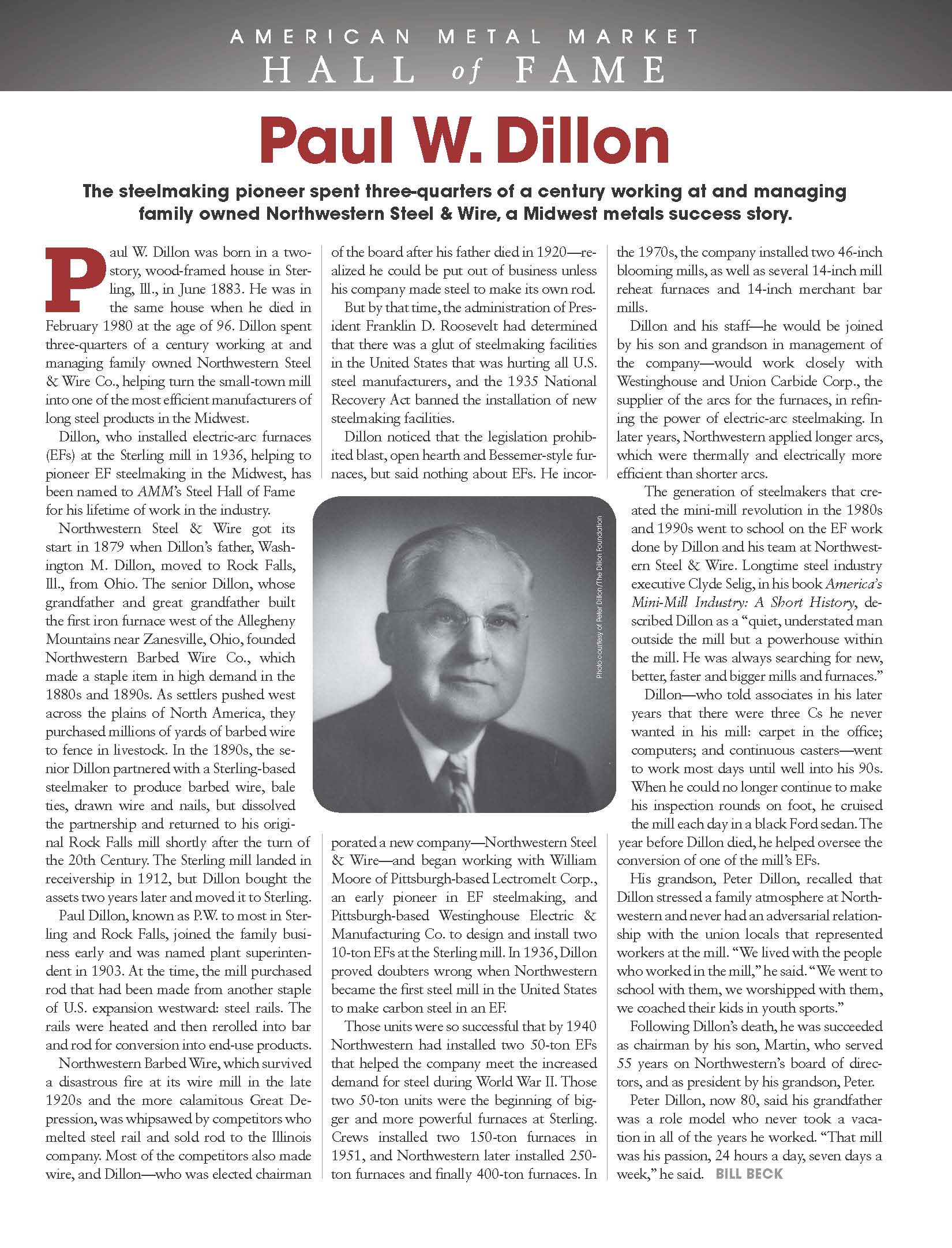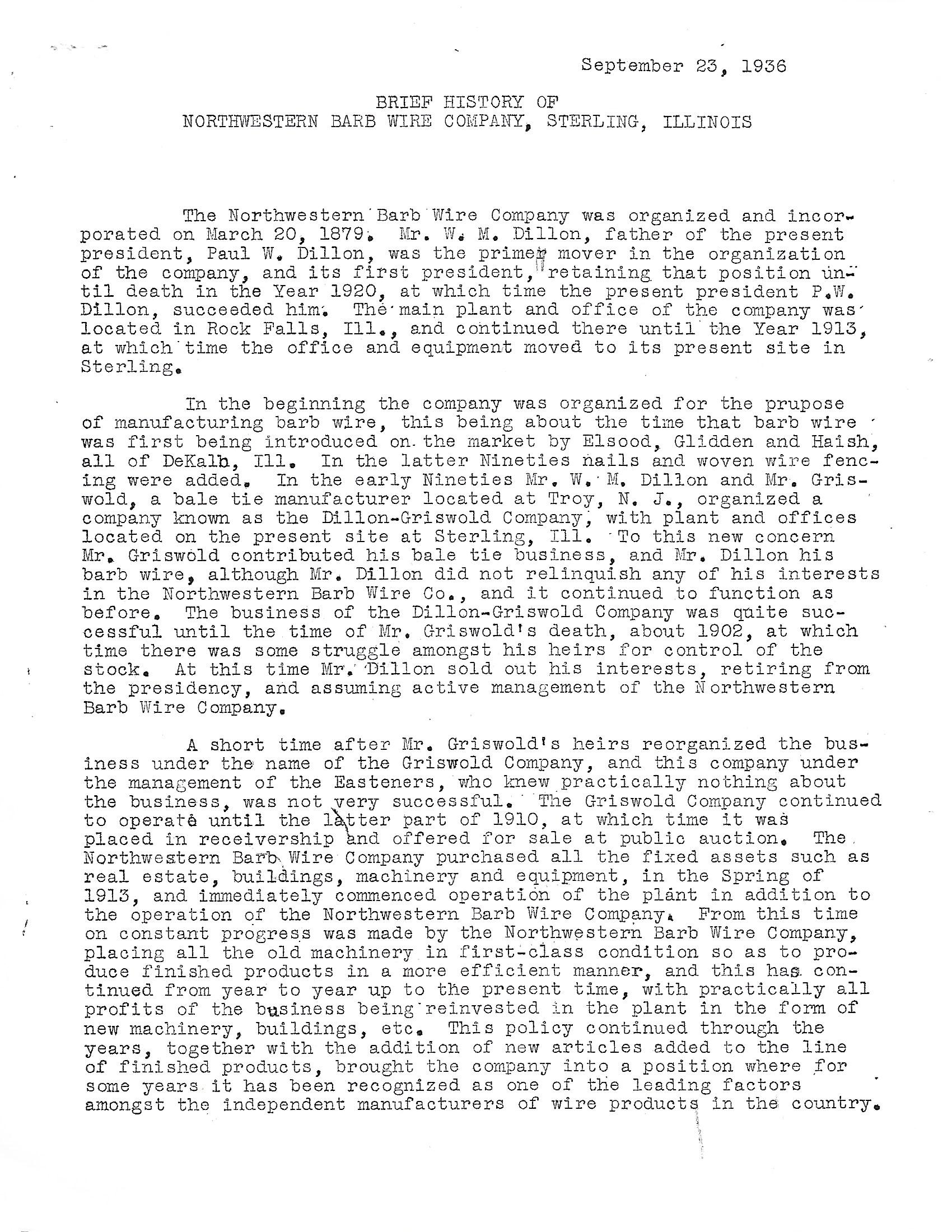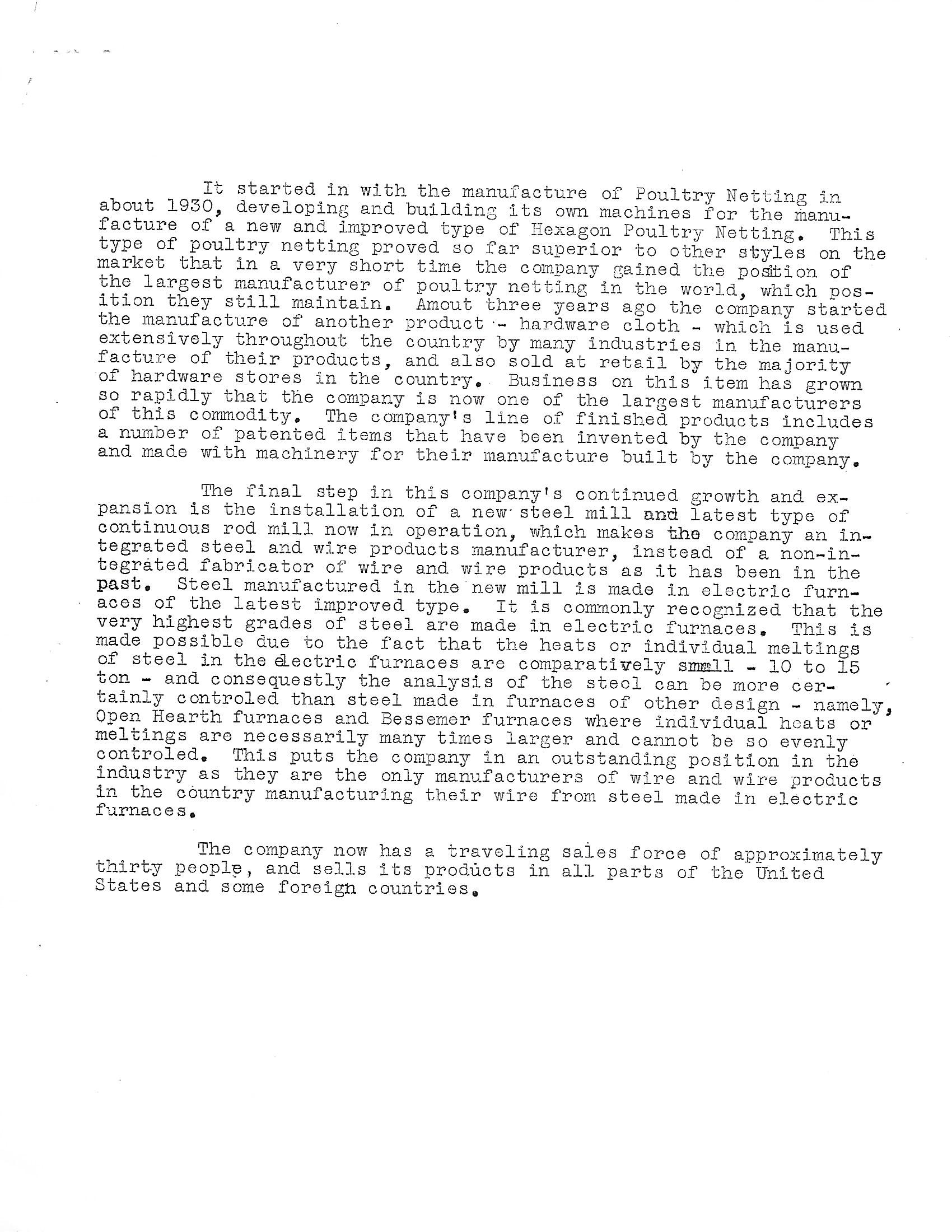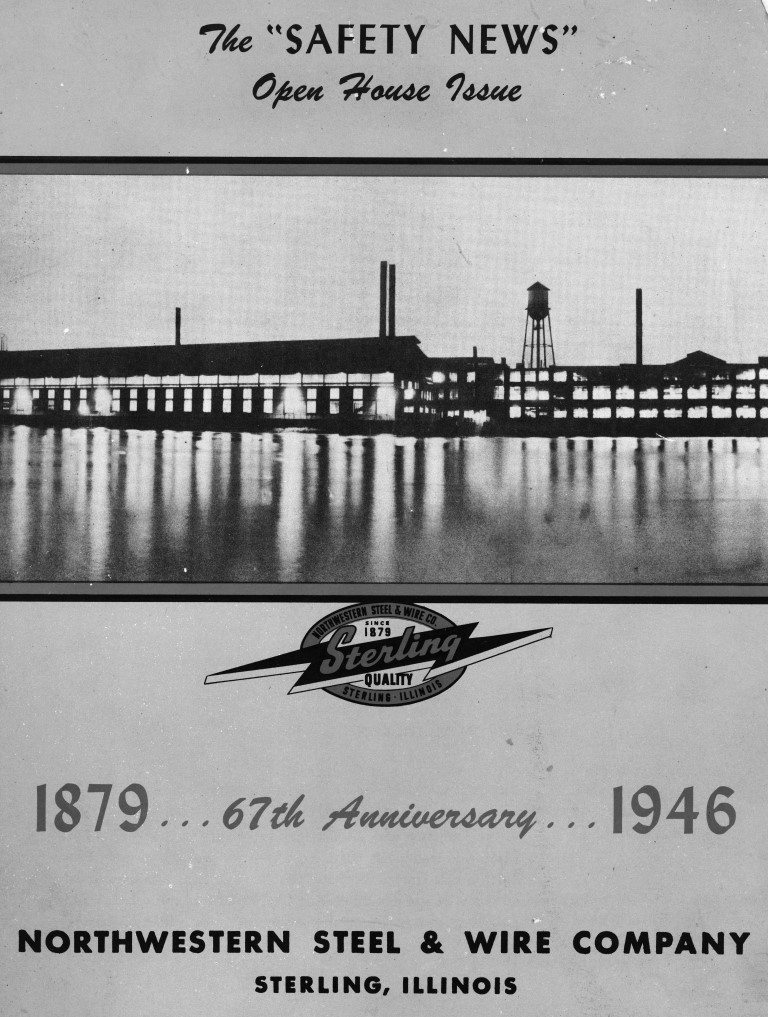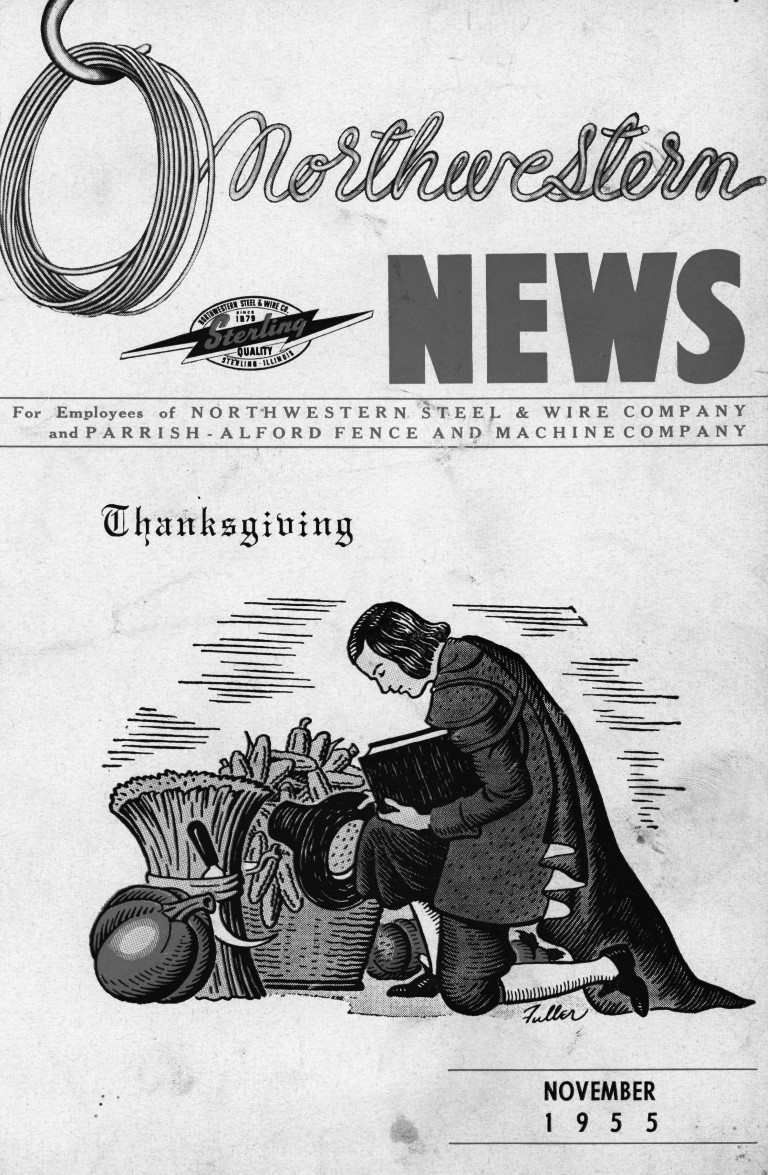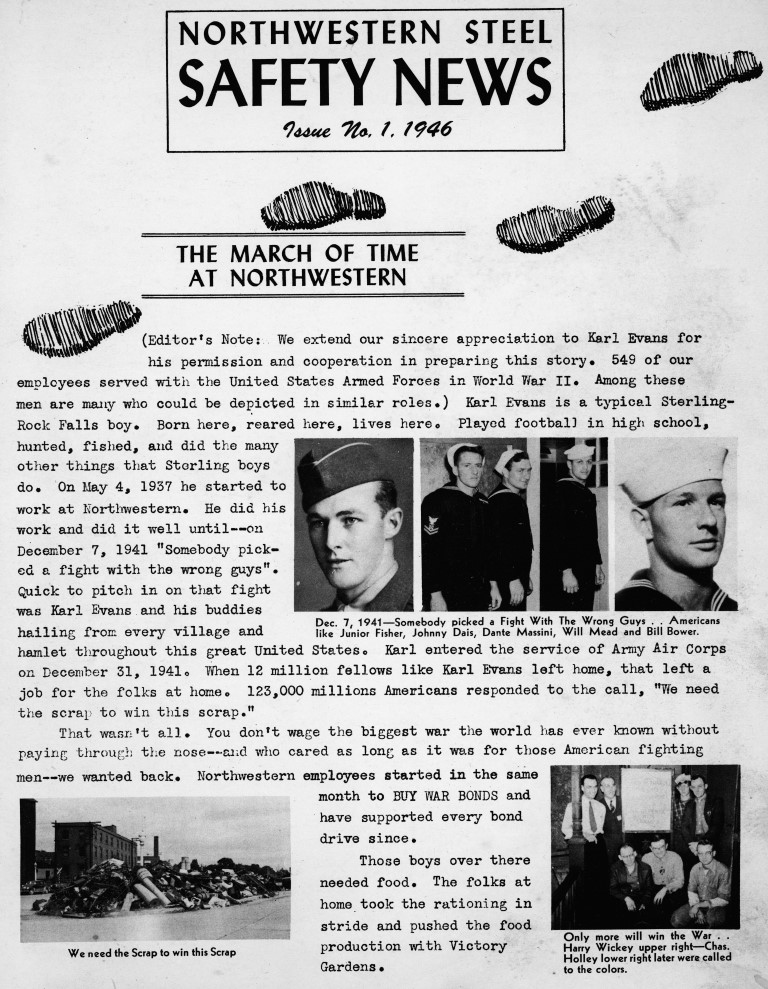Blog Archives
American Metal Hall of Fame Article
Brief History of Northwestern Steel & Wire Company, from 1936
1989 Issues of the Owners Manual
April 1989 Issues of the Owners Manual
http://www.nwsw
Nail production and packing in the 1940’s.
Nail production and packing in the 1940’s.
Ordinarily rattlers may mean anything from a diamond back serpent down to a celluloid play toy for a baby. However, we have out “rattlers” in the Wire Mill and the only resemblance they have to the above is that they “shake” the daylights out of the nails.
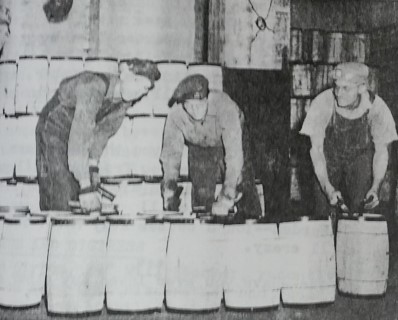
Otto Werderman, Paul Bartle, Joe Novak, and Orville Reynolds are cleating kegs of #8 common nails for export shipment.
After the nails have been fabricated on the nail machines, they are taken in push-carts to the scales and weighed. On the first floor they are dumped in a chute that carries them in a revolving drum which contains about 3 kegs of saw dust. This saw dust removes grease and nail whiskers (the little steel parts off of the points) and gives the nail a shiny finish.
Ray Berger, Everett Hill, and C. Spors are seen in the photograph carrying out the final process at the rattlers. You can see the nails coming down from the drum above. They drop into a pan where Berger pulls them over to a “keg-funnel” where the kegs are weighted, inspected, and headed. Sport, with hammer in hand, is just placing the keg head into position.

Ray Berger, Everett Hill, and C. Spors are seen in the photograph carrying out the final process at the rattlers.
Ray Berger, Everett Hill, and C. Spors are seen in the photograph carrying out the final process at the rattlers.
Keg heads with the company name, size, grade, weight, and description have already been prepared in advance by Tom Forehand. Tom’s printing press prints on wood the same as a regular printing press does on paper.
Where kegs of nails are to be shipped on export orders, a special steel cleat is clamped over the keg head and the rim. This cleat makes for a stronger barrel to withstand rough handling. In the picture, Otto Werderman, Paul Bartle, Joe Novak, and Orville Reynolds are cleating kegs of #8 common nails for export shipment. Some of our heaviest government directives on war orders have been for nails. The men in this department have made a substantial contribution to the war effort.
Northwestern Steel & Wire used a CAT to move charging buckets back in the day.
Purring Cat is what they called it. Caterpillar 35 or plain old, “CAT” — they called it what they wanted but LeRoy Eshleman is the man controlling its paws in the picture. The men who are responsible for the operation of this tractor are important men to furnace production. In order to relieve congestion and lessen dangers in the Electric Furnace Department, it was decided to charge the scrap buckets with the cranes outside.
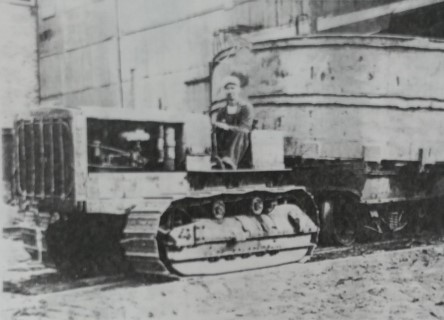 That’s a charging bucket for scrap iron, in the picture, which is on the railway flat car. In that the locomotive was not handy at all times for moving the cars and in view of the Safety Rules that railway cars are not to be moved by the overhead cranes, another means was devised,,, namely the CAT.
That’s a charging bucket for scrap iron, in the picture, which is on the railway flat car. In that the locomotive was not handy at all times for moving the cars and in view of the Safety Rules that railway cars are not to be moved by the overhead cranes, another means was devised,,, namely the CAT.
Eshelman is a Scrap Yard bucket charger and sees to it that the movement of the scrap iron is continually flowing to the furnaces. They tell us that once you have learned to stay on the CAT that “wild hoss flesh” will never scare you.
Ed Reisener and B. Dewey’s grand just recently over-hauled the motor. In the course of the job they put new steel foot-plates on the sides. Both jobs were for safety improvements.
Women in Steel ~ During World War II, many women stepped in and worked at the mill
Women in Steel “1944”
From an issue of the Northwestern Safety News in 1944
Transcribed and edited by Dana Fellows, 2014

These ladies stepped in during World War II and worked in Field Fence at the mill. Mrs. William Milby; Miss Gladys Wilson; Mrs. Ed Sanders; Mrs. Helen Adair: Mrs. Leonard Michel; and Mrs. Margaret Murray. Jack Shierry is the man to the right.
During World War II many women went to work to help out while men were overseas defending our country. Northwestern Steel & Wire Company was no different than other factories at the time. Mrs. William Milby; Miss Gladys Wilson; Mrs. Ed Sanders; Mrs. Helen Adair: Mrs. Leonard Michel; and Mrs. Margaret Murray “Kept ‘Em Rolling” in the Field Fence Department at Northwestern Steel & Wire Company. These “Women of Steel” had a big job to do in keeping the rolls of fence going onto the conveyor so that they would be carried to the Shipping Platform at the mill. Mrs. Murry’s and Mrs. Michel’s husbands are in the United States Armed Forces. Mrs. Milby’s husband works in the Bundling Department and Mrs. Sanders’ husband, Eddie, operates a crane in the West Scrap Yard.
In the picture, these ladies are en-route to the Fire Escape. Point is that this escape was blocked by pipes. The Pipe-fitting Crew got a moment to move them the other day – and another Safety Job was completed.
Oh yes! “Jack” Shierry, foreman of the Field Fence, you might say stole the show from Pete Peters of the Shipping. These ladies all work for “Pete” but their duties confine them to Jack’s Department. Jack just stepped into the picture.
Late 1940’s NWSW Recruit Workers from San Antonio Texas
April 15, 1946
Sterling Daily Gazette Reports
Late 1940’s NWSW recruits workers from San Antonio Texas
No One to Take Jobs; Many Mexican Vets Are Brought Here
With demands at the United States employment office for 775 men in the Sterling and Rock Falls factories and no one willing to accept the work, a manager of USES (Mr. Heindel ) and a representative of Northwestern Steel and Wire company returned home Saturday from San Antonio, Texas where they secured the services of 74 American-Mexicans. The first contingent arrived Friday and the second reached Sterling on Sunday evening.

When workers first came to Sterling to work at Northwestern Steel & Wire Co., they lived in box cars painted with silver paint. The area was known as Silver City
All of those engaged are unmarried, all can speak English and many were educated int eh schools of San Antonio. A large percentage of those engaged are veterans of World War II.
The USES states that with 775 men needed immediately, the labor shortage here locally has become critical. A big majority of the jobs open at the SUES are for laborers and many of those interviewed decline to accept them. The Northwestern Steel and Wire Company can still use at least 300 more men.
The men brought here will be trained as machine operators, wire drawers, galvanizers, fence makers, and rolling mill men.
There are also a number of jobs open for skills, Manager Heindel of the USES states.
The men state that the unemployment situation at San Antonio Texas is acute with hundreds of men milling about the employment office, seeking jobs, many of them of the highest type.
The men brought to Sterling are American citizens. Arrangements have been made to house them temporary and as soon as material can be secured, barracks will be constructed.
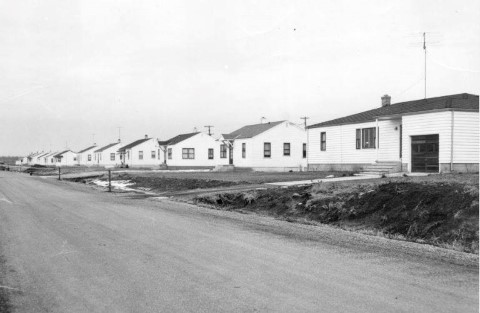
After Silver City, Northwestern Steel & Wire Co. helped employees finance homes in a subdivision known as Steelton.
The USES states that every possible effort has been made to get local men to take these jobs and both that the USES and Northwestern Steel & Wire Company representatives are empathetic in their statements that all available applicants will be given work as fast as they apply.
The USES suggest that local men make their applications immediately in order to establish their seniority rights. This is especially true of veterans.
67 Anniversary Safety News Issue
1955 November NWSW Newsletter
1946 Safety News
This is a copy of the ‘Safety News’ that Northwestern Steel & Wire published for many years. On page 3 there is the story of Karl Evans, who worked as a gauger on the 10” Mill. Karl was in the service during World War II and ended up being a prisoner of war. He was in Europe for a total of 27 months, returning home on October 1, 1945. Page 3 and 4 of this newsletter make for some very good reading.

